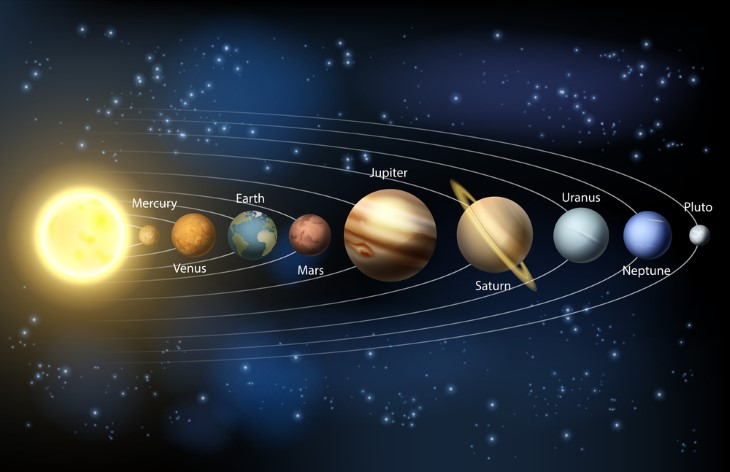
Curiosity drives us to seek answers to the everyday mysteries of our world. Whether it's understanding why flies are so attracted to us, the reason behind the sky's blue hue, or the science behind vivid memories triggered by smells, there's always something intriguing to learn. In this post, we dive into 10 fascinating questions you've probably wondered about at some point in your life, offering clear and concise explanations to satisfy your curiosity.
1. Why are flies attracted to people and land on them?

Body Odors and Sweat: Flies are drawn to the natural body odors produced by humans, including the scent of sweat. Sweat contains salts and other chemicals that flies find appealing.
Carbon Dioxide: When we exhale, we release carbon dioxide, which attracts flies, as they are drawn to this gas when searching for food sources.
Heat: Flies are attracted to the warmth of our bodies. This warmth can be associated with potential food sources or breeding environments.
Skin Secretions: Human skin produces oils and other secretions that can attract flies. These secretions can include sebaceous oils, which provide food for certain types of flies.
Bright Colors and Movement: Some flies are attracted to bright colors or the movement of a person, mistaking it for flowers or other food sources.
In summary, flies are attracted to humans due to a combination of scent, moisture, heat, and movement, which signal to them that a person might be a source of food or other resources.
2. Why is the sky blue?

Sunlight Composition: Sunlight, or white light, is made up of many different colors, each with different wavelengths. The colors of light that make up sunlight include red, orange, yellow, green, blue, indigo, and violet.
Atmospheric Scattering: When sunlight passes through Earth's atmosphere, it interacts with the gases and particles present. The shorter wavelengths of light (blue and violet) are scattered in all directions by the molecules and particles in the air. This scattering process is more effective at shorter wavelengths, which is why blue light is scattered more than the other colors.
Perception of Blue: Although both blue and violet light are scattered, we see the sky as blue rather than violet for two reasons:
Our eyes are more sensitive to blue light than to violet light.
Some of the violet light is absorbed by the upper atmosphere, making the blue light more dominant.
Variation in Sky Color: During sunrise and sunset, the sky can appear red, orange, or pink because the sun is lower on the horizon, and the light has to pass through more of the atmosphere. This means that the shorter blue wavelengths are scattered out of our line of sight, and the longer wavelengths (red, orange) dominate the sky's appearance.
In essence, the sky is blue because of the way Earth's atmosphere scatters sunlight, with blue light being scattered more efficiently due to its shorter wavelength.
3. Why can't we ever get to a rainbow?

We can never physically reach a rainbow because a rainbow is not a tangible object located at a specific place. It's an optical phenomenon that occurs under specific conditions, and it depends on the observer's position. Here's why:
Formation of a Rainbow: A rainbow forms when sunlight interacts with water droplets in the atmosphere. The light is refracted (bent), then reflected inside the droplet, and refracted again as it exits. This process separates the light into its constituent colors, creating a spectrum.
Observer-Dependent: The appearance of a rainbow is entirely dependent on the observer's position relative to the light source (usually the sun) and the water droplets. The light that forms the rainbow you see is coming from millions of droplets, and each droplet contributes only a small part of the overall arc.
No Fixed Location: Because a rainbow is based on the angles at which light is refracted and reflected, it moves with you. As you move, the angles change, and the rainbow appears to shift. This is why you can't ever reach it; it's always in a position relative to you, and it moves as you move.
Virtual Image: Essentially, a rainbow is a virtual image, similar to a reflection in a mirror. It's not located at a specific distance or point in space but rather at an angle relative to your line of sight.
In summary, a rainbow is an optical illusion that depends on your viewing angle, so no matter how far you travel, the rainbow will always appear to be at the same distance, just out of reach.

The size of the solar system can be defined in different ways depending on how one measures its boundaries. Here are the most common ways to describe its size:
Heliopause: The solar system is often considered to extend to the heliopause, which is the boundary where the solar wind from the Sun is stopped by the interstellar medium (the matter and radiation that exists in the space between star systems). The heliopause is about 120 astronomical units (AU) from the Sun. One AU is the average distance from the Earth to the Sun, roughly 93 million miles or 150 million kilometers. So, the distance to the heliopause is about 11 billion miles (18 billion kilometers).
Oort Cloud: Beyond the heliopause lies the Oort Cloud, a theoretical spherical shell of icy objects that is believed to surround the solar system. The Oort Cloud is thought to extend from about 2,000 AU to as far as 100,000 AU from the Sun. This would place the outer edge of the solar system at up to 9.3 trillion miles (15 trillion kilometers) away from the Sun. However, because the Oort Cloud is hypothetical and has not been directly observed, its exact size is uncertain.
Termination Shock: Another measure of the solar system’s size is the termination shock, where the solar wind slows down abruptly due to the pressure from the interstellar medium. This occurs at about 75-100 AU from the Sun.
Planetary Orbits: If we consider the solar system to be the region dominated by the Sun's gravitational influence, including the orbit of the outermost planet (Neptune), it extends to about 30 AU. The farthest known dwarf planet, Eris, has an orbit that takes it out to about 97 AU.
In summary, the solar system can be considered to extend from about 30 AU (if defined by the orbit of the farthest known planets) to as much as 100,000 AU (if considering the theoretical outer edge of the Oort Cloud).

It is estimated that more than 80% of the world's oceans remain unexplored and unmapped. Despite advances in technology, the vastness and depth of the ocean make it incredibly challenging to explore thoroughly. Here's why so much of the ocean remains a mystery:
In summary, over 80% of the ocean remains unexplored, highlighting the vast unknowns that still exist beneath the waves. The deep sea, in particular, is one of the last frontiers of exploration on Earth.
6. Why Do Smells Bring Up Such Vivid Memories?

Smells have a unique and powerful ability to trigger vivid memories, and this phenomenon is closely linked to the way our brain processes scents. Here's why smells are so effective at evoking memories:
A. Direct Connection to the Brain's Memory Centers:
Olfactory Bulb: When you smell something, the odor molecules interact with receptors in your nose, which send signals directly to the olfactory bulb in the brain. The olfactory bulb is part of the brain's limbic system, which is deeply involved in emotions and memory.
Limbic System: The olfactory bulb is closely connected to two key structures in the limbic system: the amygdala (which processes emotions) and the hippocampus (which is crucial for memory formation). This direct connection explains why smells can trigger emotional and detailed memories more effectively than other senses like sight or sound, which do not have such direct pathways.
B. Evolutionary Background:
From an evolutionary perspective, the sense of smell is one of the oldest senses and has been crucial for survival, helping early humans detect food, predators, and environmental dangers. This may have led to a strong link between smell and memory, ensuring that important experiences (such as the smell of food or danger) were remembered.
C. Proustian Phenomenon:
The phenomenon where a smell triggers a sudden, vivid memory is sometimes called the Proustian phenomenon, named after the French writer Marcel Proust. In his novel "In Search of Lost Time," he describes how the smell of a madeleine cake dipped in tea brings back a flood of childhood memories. This concept has been supported by research, which shows that odors can evoke more emotional and intense memories than cues from other senses.
D. Emotional Resonance:
Because smells are processed in the limbic system, which is also involved in emotion, the memories triggered by smells often come with a strong emotional component. This emotional intensity can make the memories feel more vivid and personal.
E. Specificity and Novelty:
Smells are often specific to certain experiences or environments, which means that encountering a familiar scent can take you back to a particular time or place with remarkable clarity. Unlike visual or auditory cues, which may be more common or generalized, a specific smell can act as a precise trigger for a memory.
In summary, smells trigger vivid memories because of the direct and ancient connections between the olfactory system and the brain's memory and emotional centers. This powerful link means that smells can evoke memories with greater emotional intensity and detail, often transporting us back to specific moments in our past.

The most common disease in the world is dental caries, commonly known as tooth decay or cavities. Dental caries is a chronic condition that affects people of all ages, from children to the elderly, making it the most widespread non-communicable disease globally. It occurs when the enamel, or outer layer of the teeth, is gradually worn down by acids produced by bacteria in the mouth. These bacteria feed on sugars from food and beverages, creating an acidic environment that leads to demineralization of the tooth structure.
What makes dental caries so prevalent is its direct link to diet and oral hygiene practices, both of which vary widely across different populations. Even in countries with advanced dental care, cavities remain a common issue, primarily due to the consumption of sugary foods and drinks combined with inadequate brushing and flossing. If left untreated, dental caries can lead to pain, infection, and even tooth loss, significantly impacting quality of life.
Aside from dental caries, other highly common diseases include the common cold, a viral infection of the upper respiratory tract, and hypertension (high blood pressure), which is a leading risk factor for cardiovascular diseases. However, in terms of sheer prevalence, dental caries remains at the top, affecting virtually everyone at some point in their lives. This underscores the importance of regular dental check-ups, proper oral hygiene, and a balanced diet to help prevent this widespread condition.

Self-awareness is the ability to recognize oneself as an individual, separate from the environment and other individuals. This trait is rare in the animal kingdom and is typically tested using the mirror test, where an animal is marked in a place they can't see without a mirror. If the animal uses the mirror to investigate or touch the mark on its own body, it is considered to have self-awareness. Here are some animals that have demonstrated signs of self-awareness:
1. Great Apes:
Chimpanzees: Often recognized as highly intelligent, chimpanzees have consistently passed the mirror test, demonstrating the ability to recognize themselves in a mirror.
Bonobos: Close relatives of chimpanzees, bonobos have also shown self-awareness in similar tests.
Orangutans: These great apes are known for their intelligence and have passed the mirror test as well.
Gorillas: While not all gorillas pass the mirror test, some individuals, like Koko the gorilla, have demonstrated behaviors suggestive of self-awareness.
2. Dolphins:
Bottlenose Dolphins: These marine mammals are known for their high intelligence. Bottlenose dolphins have passed the mirror test, using mirrors to inspect marks on their bodies.|
3. Elephants:
Asian Elephants: Elephants are known for their complex social behaviors and intelligence. Some elephants have passed the mirror test, indicating self-awareness. They have been observed using their trunks to inspect marks on their faces after seeing their reflection.
4. Magpies:
Eurasian Magpies: These birds are part of the corvid family, known for their problem-solving abilities. Magpies have shown self-awareness by passing the mirror test, a significant finding as birds have very different brain structures compared to mammals.
5. Orcas:
Killer Whales (Orcas): Though not as extensively studied as other animals, there is evidence that orcas may also possess self-awareness, similar to their dolphin relatives.
6. Certain Fish:
Cleaner Wrasse: In a surprising discovery, this small species of fish has passed the mirror test under controlled conditions, challenging previous assumptions about the cognitive capabilities of fish.
Limitations of the Mirror Test:
It’s important to note that the mirror test has its limitations and may not fully capture self-awareness in all species. Some animals might not be interested in or might not interact with mirrors in a way that indicates self-awareness, yet they could still have a form of self-recognition or awareness that is expressed differently.
Self-awareness is a complex trait, and while it has been demonstrated in a few species, it may manifest differently across the animal kingdom. The mirror test is a useful tool but not the only measure of self-awareness, and ongoing research continues to explore this fascinating aspect of animal cognition.
9. How long can a whale stay under water?

Whales are remarkable divers, and their ability to stay underwater without breathing varies significantly by species. Here’s a general overview of the dive times for different types of whales:
1. Sperm Whales:
Dive Time: Sperm whales are known for being the deepest and longest divers among whales. They can stay underwater for up to 90 minutes on a single breath, although typical dives last about 30 to 45 minutes.
Depth: They can dive to depths of over 3,280 feet (1,000 meters) and have been recorded as deep as 7,382 feet (2,250 meters).
2. Cuvier's Beaked Whales:
Dive Time: Cuvier's beaked whales hold the record for the longest dive of any mammal, with recorded dives lasting over 3 hours and 42 minutes. However, typical dives are about 60 to 90 minutes.
Depth: They regularly dive to depths of around 6,560 feet (2,000 meters) and have been recorded at depths exceeding 9,800 feet (3,000 meters).
3. Baleen Whales (e.g., Blue Whales, Humpback Whales):
Dive Time: Baleen whales, which include blue whales, humpback whales, and fin whales, typically stay underwater for about 10 to 30 minutes before needing to surface for air.
Depth: These whales usually dive to depths of around 500 feet (150 meters), although they are capable of deeper dives, especially blue whales, which can reach depths of around 1,640 feet (500 meters).
4. Orcas (Killer Whales):
Dive Time: Orcas typically stay underwater for 5 to 15 minutes on a single breath.
Depth: They usually dive to depths of up to 328 feet (100 meters), but they are capable of diving deeper, with some recorded dives reaching 1,000 feet (300 meters).
5. Beluga Whales:
Dive Time: Belugas can stay underwater for about 20 to 30 minutes.
Depth: They commonly dive to depths of 328 to 1,312 feet (100 to 400 meters), though they are capable of diving deeper.
6. Minke Whales:
Dive Time: Minke whales can stay submerged for 15 to 25 minutes.
Depth: They generally dive to depths of about 300 to 400 feet (90 to 120 meters).
The dive times of whales can vary widely, with some species like sperm whales and beaked whales capable of staying underwater for over an hour, while others, like orcas and baleen whales, typically stay submerged for shorter periods. These adaptations allow whales to hunt and navigate in deep ocean environments.

Time travel, as it's commonly depicted in science fiction, is a fascinating concept but remains speculative and unproven according to our current understanding of physics. Here's a breakdown of what science says about the possibility of time travel:
A. Forward Time Travel:
Relativity and Time Dilation: Forward time travel is actually supported by Einstein's theory of relativity. According to special relativity, as an object approaches the speed of light, time for that object slows down relative to an observer at rest. This effect, known as time dilation, means that an astronaut traveling near the speed of light would experience time more slowly than people on Earth. Upon returning, the astronaut would find that more time has passed on Earth than for them—effectively "traveling" into the future.
Gravitational Time Dilation: Similarly, general relativity predicts that time passes more slowly in stronger gravitational fields. Near a massive object like a black hole, time would pass much more slowly compared to a region with weaker gravity. This is another form of forward time travel.
B. Backward Time Travel:
Closed Time-like Curves (CTCs): Some solutions to Einstein's equations, such as those involving wormholes or rotating black holes (Kerr black holes), theoretically allow for closed time-like curves—paths through spacetime that loop back on themselves. In principle, this could allow for backward time travel. However, these solutions often require exotic matter with negative energy, which has not been observed, and it's unclear if such conditions could ever be physically realized.
Grandfather Paradox and Causality: Backward time travel introduces paradoxes, like the famous grandfather paradox, where a time traveler could theoretically prevent their own existence by interfering with events in the past. These paradoxes challenge our understanding of causality and lead many physicists to doubt the possibility of backward time travel.
C. Quantum Mechanics and Time Travel:
Quantum Entanglement and Information: Quantum mechanics introduces some intriguing possibilities related to information transfer, but it doesn't provide a clear mechanism for macroscopic time travel. Quantum entanglement and phenomena like the "many-worlds" interpretation hint at non-linear experiences of time, but they remain speculative and don't offer a practical means of time travel.
D. Practical Limitations:
Energy Requirements: Theoretical models that allow for time travel, such as creating a wormhole, typically require enormous amounts of energy, far beyond anything we can currently generate. The engineering challenges are also immense, making time travel unlikely with our current technology.
Unproven Theories: While time travel is a popular topic in theoretical physics, it remains unproven and speculative. No experimental evidence has been found to support the possibility of time travel, particularly into the past.
So, while forward time travel is supported by relativity and has been demonstrated on small scales (like in particle physics experiments or GPS satellites), backward time travel remains speculative and fraught with paradoxes. The possibility of time travel, particularly into the past, is still a topic of theoretical exploration, but it is far from being a reality with our current understanding of physics.